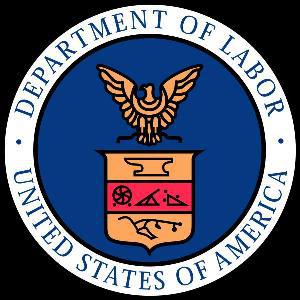
EXCLUSIVE: Fully two years before whistleblower Craig Simmons alerted the U.S. Department of Labor to alleged malfeasance at the $ 3 billion SAG Pension & Health Plans, fellow employee Gary Mathis made virtually identical allegations to the federal agency, Deadline has learned.
Mathis and Simmons both filed claims and wrongful-termination suits, with decidedly different outcomes. Mathis’ claims were rejected by an arbitrator, but Simmons’ claims went public, with coverage so intense it led to the resignation of Bruce Dow, the benefit plans’ longtime CEO. The Simmons arbitration resulted in a confidential settlement, and that DOL probe is ongoing.
Mathis says that while the investigation into his charges led to the subsequent inquiries, “I got nothing out of it,” he told Deadline, which has obtained the Labor Department complaint he filed in 2009 (read it here). “Craig reached out to me when he was going through his lawsuit, and I met with him and with the FBI. My claim gave him some additional information that maybe he wasn’t privy to. I was the head of IT, and I saw a lot.”
 The emergence of a second whistleblower raises serious questions: Why were Simmons’ claims taken so seriously when the DOL previously had dismissed virtually the same ones by Mathis? Why was a dysfunctional situation at the plans allowed to fester for another two years before Simmons’ charges forced Dow to step down?
The emergence of a second whistleblower raises serious questions: Why were Simmons’ claims taken so seriously when the DOL previously had dismissed virtually the same ones by Mathis? Why was a dysfunctional situation at the plans allowed to fester for another two years before Simmons’ charges forced Dow to step down?
Mathis and Simmons both claimed they’d uncovered embezzlement by Chief Information Officer Nader Karimi, that Dow’s wife Sharman Dow was improperly profiting as an insurance broker for the plans and that Dow’s brother-in-law Michael Bugbee was paid large sums for a no-show job as publisher of the plans’ quarterly newsletter. Mathis says his case never got any press “because my attorney did not want to try the case in the media, which I disagreed with. I thought the publicity would strengthen my case for them to settle.”
It was Mathis’ complaint, not Simmons, that first caught the attention of the DOL, which began its investigation in September 2010 – a year after Mathis made his complaint to the DOL and a year before Simmons filed his.
In his deposition last year for the arbitration in Simmons’ wrongful-termination suit, Dow testified that DOL agent Richard Vera showed up at the Burbank offices of the SAG P&H Plans asking a lot of questions about his wife and brother-in-law.
During that meeting, Vera told Dow his wife’s work as a broker for the plans’ insurance policies “could have the appearance of a conflict of interest.” Dow told Vera that any appearance of a conflict had ended, at his insistance, five years earlier when she “was excluded from receiving any direct or indirect benefit” from her position. In his deposition, Dow said he told Vera that “any beneficial financial arrangement of my spouse was stopped at the end of 2006, and that the plans, ever since I’ve been there, had always kept another brokerage service company that wrote a significant number of policies for the plans.” He also noted that “the division president gave me assurances that there would be no financial benefit for her.”
Dow said in his deposition that he answered all of Vera’s questions in a meeting that lasted 30 minutes.
Mathis said the Department of Labor never contacted Mathis about his 2009 complaint, though he has been helping the DOL’s investigation of Simmons’ allegations.
In his wrongful-termination suit, Simmons, who was at the time Executive Director of Human Resources, said Dow fired him in 2011 for uncovering widespread corruption at the benefit plans. He claimed that Dow was sending the plans’ insurance business to his wife and that she pocketed part of the premiums; that Dow paid his brother-in-law Michael Bugbee for the no-show newsletter job; and that Dow underreported the amount of money allegedly embezzled by the plans’ CIO, Karimi. The plans’ insurance carrier ended up paying the plans $ 2.5 million to cover the alleged embezzlement, though Simmons claimed the loss was much more.
Mathis worked directly under Karimi and made strikingly similar claims in his July 6, 2009, letter to the DOL. “I was terminated for bringing to the attention of SAG’s controllers the misappropriation of funds by the CIO Nader Karimi and CEO Bruce Dow, with extensive supporting documentation,” Mathis wrote. “For example, the CIO was paying $ 140,000 to a friend’s consulting company” and “falsifying documents,” while Dow had hired “an insurance company where (his) wife is the VP, a major conflict of interest. His wife receives bonuses/commissions for SAG’s major insurance accounts, which the money goes back into the CEO and wife bank accounts.”
Karimi, now CIO at the fashion house BCBG Max Azria, did not return calls for comment.
Mathis told the DOL that Dow’s wife, who was then SVP of USI Insurance Services — at the time a division of Goldman Sachs — sold various commercial policies used by the SAG benefit plans, including Workers’ Comp, general and miscellaneous liability coverage, professional liability, automobile insurance, group health, 401(k), life insurance and malpractice coverage. Her brother, Mathis told the DOL, “is what is referred to as a phantom employee at SAG. His position is called Communications Manager. He has been on SAG’s payroll, pension plan and full healthcare for almost 12 years now but never is seen or worked at the SAG offices.”
Mathis also alleged that Dow’s first wife, Mary, “owned a claims audit company under her maiden name that SAG (P&H Plans) paid to audit their health claims.” He further told the DOL that the benefit plans were “paying for services of a close friend of the CIO, which came out of the approved project budgets … (who) had absolutely no involvement whatsoever in any of the board-approved projects or budgets. Based on project management, this appears to be a financial fraud issue based on project funds’ accountability.”
Mathis told the DOL that “when this was brought to the SAG (P&H Plans) controller’s attention, she was very nervous about the magnitude of these issues and complaints, which again had supporting documentation.”
Mathis went on to allege that Karimi had “hired another company he had a close relationship with … to oversee a project that already had an in-house project manager. (That company) had an approved spending budget between $ 50,000-$ 100,000 maximum. The CIO ended up spending $ 1,562,000 of the Taft-Hartley pension fund money … which no one was aware of but me, due to several of the invoices coming across my desk.”
Another “close friend” of Karimi’s, Mathis told the DOL, was hired as a project manager even though she “didn’t have an actual company or DBA license to submit to human resources for this newly created position. The CIO Nader Karimi came to my office one night looking for another consultant business company license or contract to copy for HR and the accounting department, who asked for it before she could start that following Monday. The bogus/fake company created that night by the CIO was calls Basix.”
Mathis also told the DOL that at Karimi’s direction, “During Price Waterhouse and Coopers audits, everything was set up/prepared in advance to only provide limited information in certain areas only. If the young, sometimes very young, auditors try to pry for more information, we will use our vast experience to guide them into different directions with much success. Audits are very easy to pass for any major Taft-Hartley company in SAG’s position because you are aware of what type of information they need and you prepare before they arrive. These audits were not a surprise or unscheduled, and all information, documentation and scripted feedback from employees were prepared from advanced questions.”
Ending his 2009 letter to the DOL, Mathis wrote: “Please contact me if you would like to follow up on this interesting but true story of SAG’s executive greed and the whistleblower being retaliated against for bringing this to light. I look forward to hearing from you, and following your investigation into these very true allegations and more.”
In the arbitration of Mathis’ wrongful-termination case, retired LA Superior Court Judge Eli Chernow found no merit to any of Mathis’ allegations, ruling against him on every claim.
“We had a wonderful case,” said Mathis’ attorney, Nick Alden. “If we had gone before a jury, we would have won hands down. But the chances of winning at arbitration are practically nonexistent, especially when you go against a big law firm.”
Denise Petski

